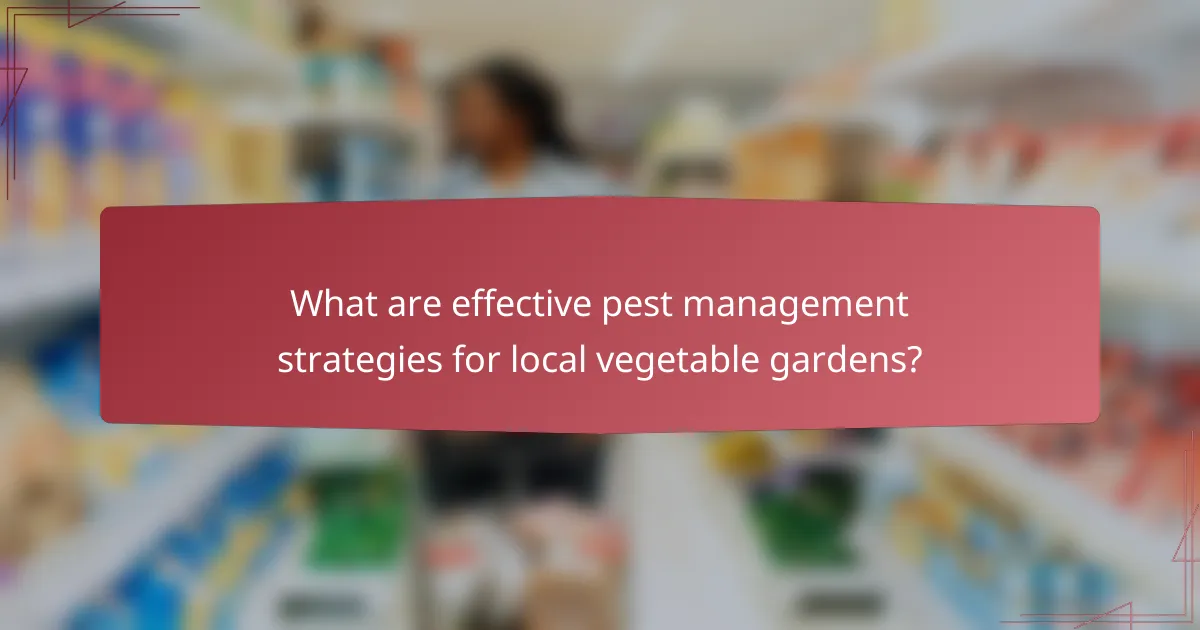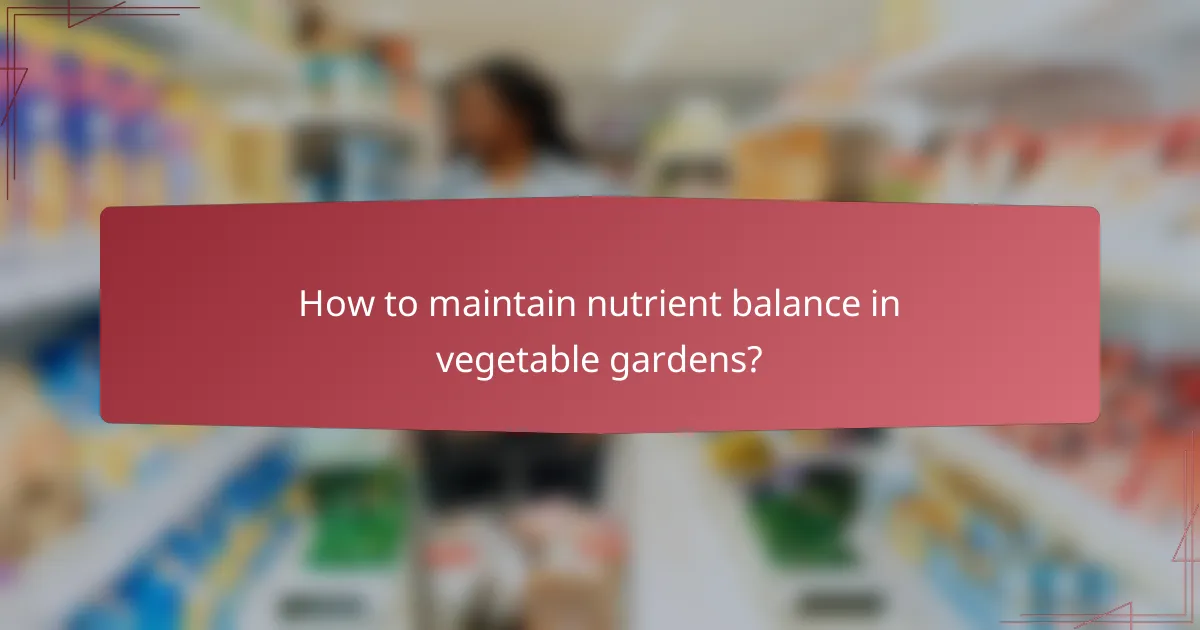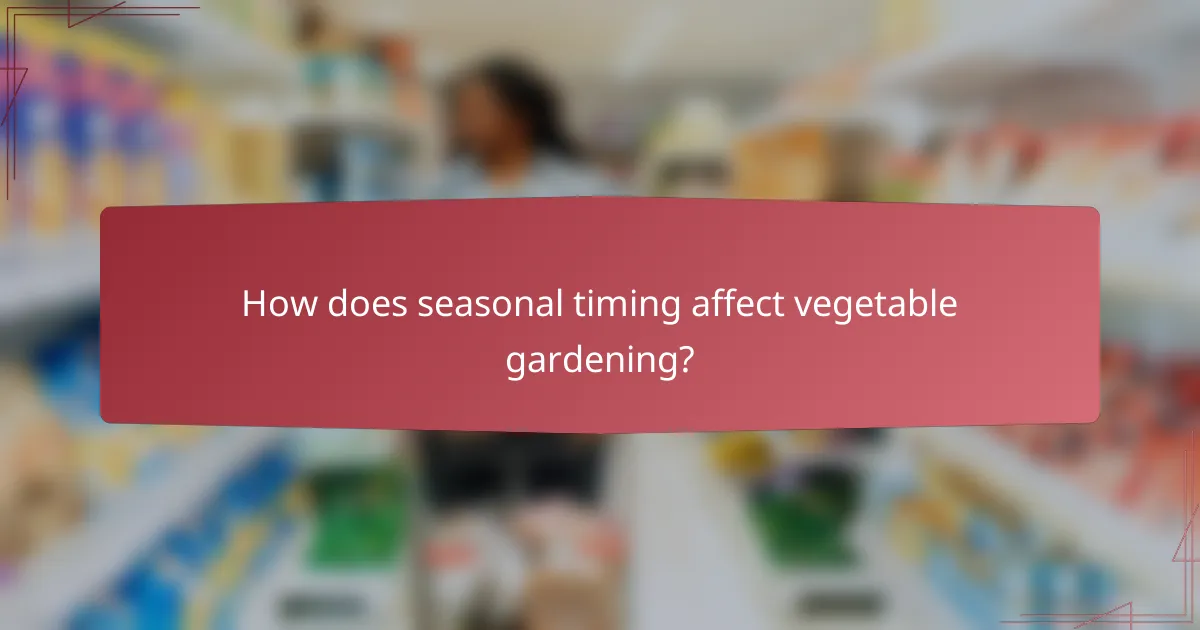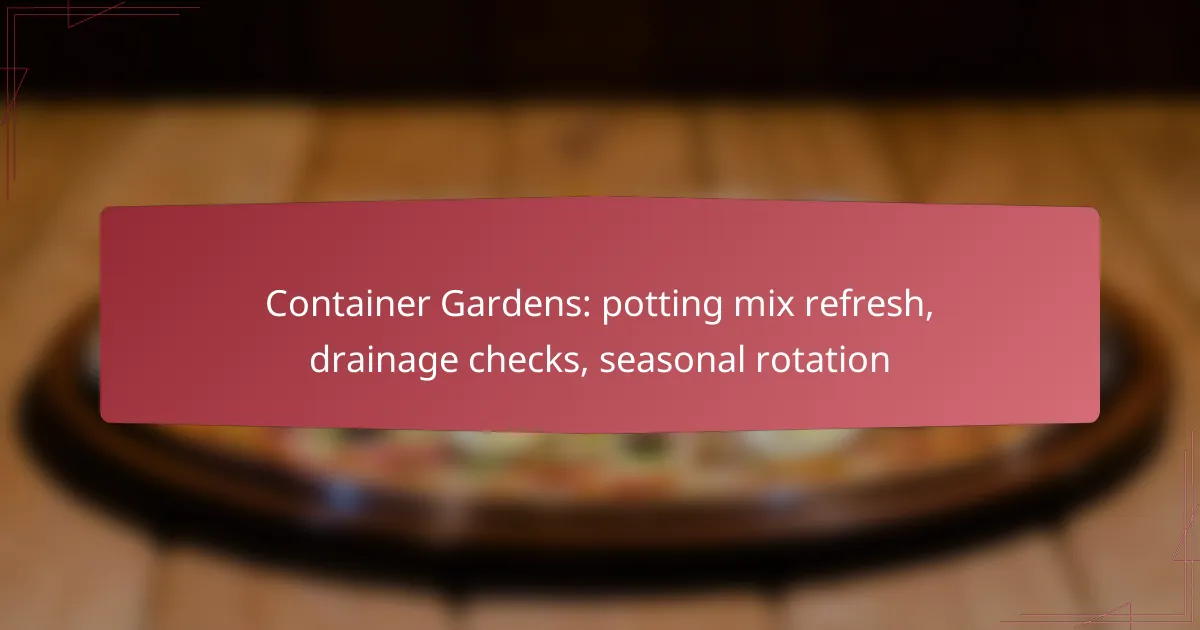Vegetable gardens thrive when gardeners implement practices such as crop rotation, effective pest management, and nutrient balance. By rotating crops, gardeners can enhance soil health and reduce pest problems, while integrated pest management techniques help protect beneficial organisms. Additionally, maintaining nutrient balance through regular soil assessments and organic amendments ensures that plants receive the essential nutrients needed for robust growth and productivity.

How can crop rotation improve vegetable gardens in urban areas?
Crop rotation can significantly enhance vegetable gardens in urban areas by promoting healthier soil and reducing pest issues. By systematically changing the types of crops grown in a specific area, gardeners can maintain nutrient balance and improve overall garden productivity.
Enhances soil fertility
Crop rotation enhances soil fertility by alternating deep-rooted and shallow-rooted plants. For example, planting legumes like beans or peas can fix nitrogen in the soil, enriching it for subsequent crops. This practice can lead to a more balanced nutrient profile, reducing the need for synthetic fertilizers.
Urban gardeners should consider rotating crops every season or every year, depending on the space available. Keeping a simple record of what was planted where can help track and plan future rotations effectively.
Reduces pest buildup
By rotating crops, gardeners can disrupt the life cycles of pests that thrive on specific plants. For instance, if tomatoes are followed by a crop like lettuce, pests that target tomatoes will have fewer hosts to infest. This natural method can reduce the reliance on chemical pesticides.
To maximize pest management, urban gardeners should identify common pests in their area and plan rotations accordingly. Regular monitoring and adjusting planting schedules can further enhance pest control efforts.
Increases yield diversity
Crop rotation increases yield diversity by allowing a variety of plants to be cultivated over time. This not only provides a broader range of produce but also helps in managing soil health and pest resistance. For example, rotating between root vegetables, leafy greens, and legumes can lead to a more resilient garden.
Urban gardeners can experiment with different combinations of crops to find what works best for their specific environment. Keeping track of yields from various rotations can help inform future planting decisions and improve overall garden productivity.

What are effective pest management strategies for local vegetable gardens?
Effective pest management strategies for local vegetable gardens focus on preventing pest issues while minimizing harm to beneficial organisms. These strategies include integrated pest management, companion planting, and the use of organic pesticides.
Integrated Pest Management (IPM)
Integrated Pest Management (IPM) combines multiple strategies to control pests effectively while reducing chemical use. It involves monitoring pest populations, identifying pest species, and implementing control methods based on thresholds that determine when action is necessary.
Key components of IPM include cultural practices, biological controls, and mechanical methods. For instance, rotating crops can disrupt pest life cycles, while introducing natural predators like ladybugs can help manage aphid populations.
Companion planting techniques
Companion planting involves growing different plants together to enhance growth and deter pests. Certain plants can repel harmful insects or attract beneficial ones, creating a balanced ecosystem in your garden.
For example, planting marigolds alongside vegetables like tomatoes can deter nematodes and other pests. Similarly, basil planted near peppers can repel aphids and enhance flavor. Consider using combinations that suit your local climate and pest challenges.
Organic pesticide options
Organic pesticides are derived from natural sources and can be effective in managing pests without harming beneficial insects or the environment. Common options include neem oil, insecticidal soap, and diatomaceous earth.
When using organic pesticides, it’s crucial to follow application guidelines to minimize impact on non-target species. For instance, applying neem oil in the evening can reduce harm to pollinators. Always test a small area first to ensure plants tolerate the treatment.

How to maintain nutrient balance in vegetable gardens?
Maintaining nutrient balance in vegetable gardens involves regularly assessing soil health, using organic amendments, and understanding the specific needs of different crops. This ensures that plants receive the essential nutrients required for optimal growth and productivity.
Soil testing for nutrient levels
Soil testing is crucial for determining the nutrient levels present in your garden soil. A simple soil test can reveal pH levels, nitrogen, phosphorus, potassium, and other micronutrients, allowing you to make informed decisions about amendments. Testing should ideally be done every few years or when you notice poor plant performance.
To conduct a soil test, collect samples from various spots in your garden and send them to a local agricultural extension service or a soil testing lab. They will provide a detailed report along with recommendations for nutrient amendments based on your specific soil conditions.
Use of compost and organic fertilizers
Compost and organic fertilizers are effective ways to enhance soil nutrient content and structure. Compost enriches the soil with organic matter, improving moisture retention and microbial activity, while organic fertilizers, such as bone meal or fish emulsion, supply essential nutrients without the risk of chemical runoff.
Apply compost in the spring or fall, mixing it into the top layer of soil. Organic fertilizers should be used according to package instructions, typically at planting time or during the growing season to support nutrient uptake.
Crop-specific nutrient requirements
Different vegetable crops have unique nutrient requirements that must be considered for successful growth. For instance, leafy greens like spinach and lettuce thrive on nitrogen, while root vegetables such as carrots and potatoes require more potassium and phosphorus.
To meet these specific needs, rotate crops annually and incorporate crop-specific fertilizers as needed. For example, after growing nitrogen-hungry crops, follow with legumes that can fix nitrogen in the soil, thus maintaining a balanced nutrient profile across seasons.

What are the prerequisites for successful vegetable gardening?
Successful vegetable gardening requires understanding local conditions, selecting appropriate plant varieties, and preparing the soil effectively. These factors ensure that plants thrive and produce a bountiful harvest.
Understanding local climate conditions
Local climate conditions significantly influence vegetable gardening success. Factors such as temperature, rainfall, and frost dates determine which crops can be grown and when to plant them.
For example, warm-season crops like tomatoes and peppers thrive in areas with long, hot summers, while cool-season crops such as lettuce and peas prefer milder temperatures. It’s essential to check local climate data and consider microclimates within your garden.
Choosing suitable vegetable varieties
Selecting the right vegetable varieties is crucial for a successful garden. Look for varieties that are well-adapted to your climate and soil conditions, as well as those that are resistant to common pests and diseases.
Consider heirloom varieties for unique flavors and characteristics, or hybrid varieties for higher yields and disease resistance. Always check local gardening resources for recommendations on the best varieties for your area.
Soil preparation techniques
Proper soil preparation is vital for healthy vegetable growth. Start by testing your soil to determine its pH and nutrient levels, which will guide your amendments. Most vegetables prefer slightly acidic to neutral soil (pH 6.0-7.0).
Incorporate organic matter, such as compost or well-rotted manure, to improve soil structure and fertility. Tilling the soil to a depth of at least 12 inches can help aerate it and promote root development. Avoid compacting the soil, as this can hinder plant growth.

How does seasonal timing affect vegetable gardening?
Seasonal timing is crucial in vegetable gardening as it influences crop growth, yield, and pest management. Understanding the right timing for planting, harvesting, and managing pests can significantly enhance the success of your garden.
Planting schedules for different crops
Different vegetable crops have specific planting schedules based on their growth cycles and seasonal preferences. For example, cool-season crops like lettuce and peas thrive when planted in early spring or late summer, while warm-season crops such as tomatoes and peppers should be planted after the last frost in spring.
A practical approach is to consult a planting calendar specific to your region, which outlines the best planting times for various vegetables. Many gardeners find success by starting seeds indoors for early crops and transplanting them outdoors when conditions are favorable.
Impact of frost dates on planting
Frost dates are critical for determining when to plant vegetables, as many crops are sensitive to cold temperatures. The last frost date in spring marks the time to start planting warm-season crops, while the first frost date in fall signals when to harvest or protect tender plants.
To avoid frost damage, gardeners should monitor local frost dates and use tools like frost blankets or row covers to protect young plants. It’s advisable to check historical data for your area, as frost dates can vary significantly depending on geographic location and climate conditions.



